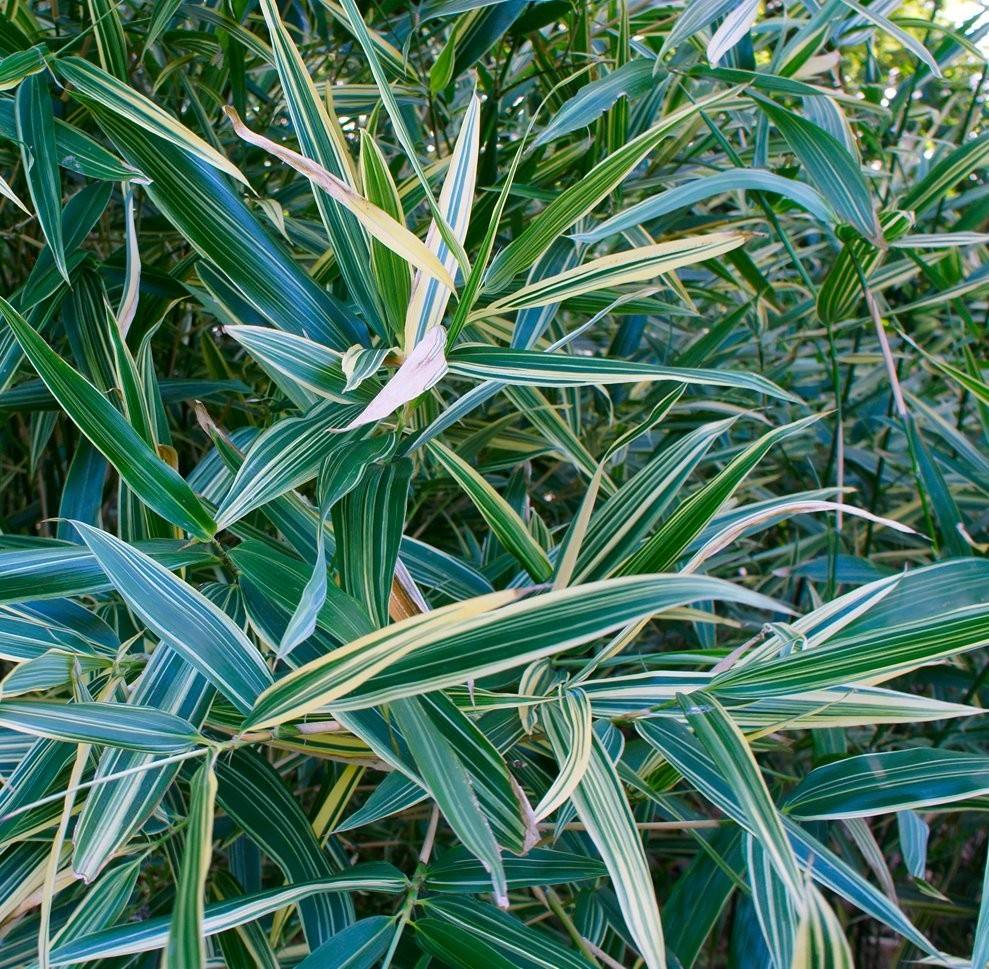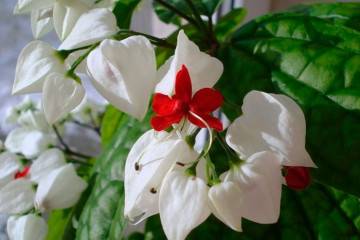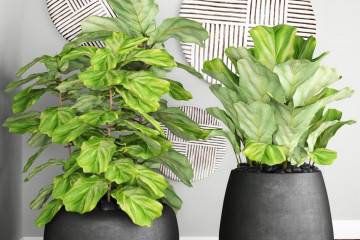Indoor bamboo - home care
Content:
Indoor bamboo is a type of grain whose stems are stiff. This plant belongs to the genus Dracen, the Asparagus family and can develop equally well both in water and in soil. Indoor bamboo is also known as Dracaena Sander. Central Africa is considered his homeland. Despite the fact that bamboo looks like a single woody stem, the plant is considered a shrub.
Indoor bamboo - home care
At home, bamboo can exist for a long time. It does not belong to capricious plants that require constant care and attention. Under conditions of room temperature, proper lighting and watering, the leaves of the bush can reach up to 25 cm in length.
If the plant is not transplanted, then the water should be changed once every 12-14 days. When changing water, you should pay attention to the fact that it is settled, without chlorine.
Common varieties
There are many varieties of indoor bamboo. Varieties are classified according to plant height. They are divided into low, medium and high.
Dracaena Sander is a fairly common houseplant. The most famous varieties that can most often be found in interiors:
- Lucky;
- Golden lily;
- Tsuboi;
- Shiroshima;
- Weeping Mexican
Bamboo Lucky
One of the most common undersized varieties. It reaches a height of no more than 1 meter. Leaves are small, pointed, juicy, green. The stem can be shaped like a spiral, heart. If more than one representative of this variety grows in the ground, it is possible to create an interesting design composition in the form of a lattice.
Bamboo golden lily
Evergreen perennial. The stem can be spirally shaped. It belongs to low-growing varieties, reaches a height of no more than 1 m. It can bloom once a year.
Bamboo Tsuboi
A popular variety of low-growing bamboo. Has a rich green color. The root system is vertical, the shape of the leaves is oblong, the ends are pointed. Leaves are smooth, stripes of different shades of green can be observed.
Bamboo Shiroshima
This type of bamboo is medium-sized. It can reach a height of about 3 m. The root system is powerful, it develops rapidly when growing in water. Leaves are dark green in color with stripes along their entire length.
Mexican weeping bamboo
The Mexican weeping bamboo has a very flexible main stem. From several single plants, you can make fancy compositions, bend the plant in the shape of a heart, or give it various other forms. The root system is vertical, branched. It belongs to medium-sized varieties, it can reach a height of 3.5 m.
Use for interior decoration
Designers often use home bamboo for interior decoration. It immediately attracts attention, goes well with sculptures or ceramic dishes, giving the room a certain style. Given its unpretentiousness to living conditions, the plant can be placed in any corner of the room. It grows well in semi-dark rooms, the humidity of the air is not important to it, it requires abundant and frequent watering.
A perennial can be placed not only in pots with soil, but also in transparent long vases with water and pebbles, you can use ceramic dishes in the form of exotic or mythical animals. Smooth bamboo stems are intertwined or tied with golden and red ribbons, building pyramids from plants. It fits perfectly into an Asian-style room. Medium-sized bamboos, upon reaching a certain height, are used in the interior as a living bamboo wall for zoning a room.
The magical properties of indoor bamboo
Perennial has long been endowed with magical properties. Depending on its location in the room, it can affect certain aspects of life. For example, placing a bush in the southeastern part of the room can attract financial well-being. If you grow bamboo in the eastern part of the apartment, you can achieve family harmony. And if you grow the plant in the southwest part of the room, you can expect romance in a relationship.
Briefly about the history of appearance
The history of the origin of this exotic plant is very interesting. According to one of the legends, a young warrior fell in love with the daughter of the ruler. But the strict father counted on a more influential son-in-law, so he came up with a certain test for the lover. He took a stick, stuck it in the ground and said that his daughter would marry a warrior only if living, green leaves appeared on the stick.
The young man decided to win the hand of his beloved, no matter what it cost him, and watered a dry stick every day. In an instant, a miracle happened, and the stick began to turn green and release leaves. The ruler had to keep his promise and marry his daughter to a warrior. And the talisman of their long and happy family life was a perennial, which later acquired the name "bamboo of happiness."
Features of bamboo care at home
Bamboo at home does not require careful attention, moreover, excessive care can provoke disease and death of the plant. But there are certain subtleties, knowing which you can get a wonderful exotic decor element in a short time.
Temperature
For the proper development of a healthy shrub, it is necessary to maintain the air temperature in the range from 15⁰C to 35⁰C. If the temperature on the windowsill is higher or lower than the indicated values, the flower can be rearranged in a place where there are no windows, in a semi-dark room.
Lighting
Bamboo does not tolerate direct sunlight as it can burn the leaves. It can be placed on the windowsill, creating partial shade there with curtains or fabric roller shutters, or you can place a container with a plant in the bathroom. But perennials are recommended to provide at least minimal access to ultraviolet light.
Watering
The optimal water for watering dracaena is melt water. When using tap water, the plant's immunity decreases, since there is a lot of alkali in the liquid, which bamboo does not like. If the bamboo grows in the soil, the latter must be moistened as it dries, If the plant is in a flask with water, it is recommended to change the latter at least once every 14 days.
Spraying
Spraying bamboo is not recommended.The plant, of course, will not die from spraying, but excessive moisture destroys the microclimate around the shrub. It is recommended to wipe the leaves and trunk of the perennial with a damp cloth or napkin.
Humidity
There are no specific indicators of air humidity at which indoor bamboo feels perfect. It is important to understand that increased dryness of the air has a detrimental effect on the color and growth of the plant. Since the flower does not really like spraying, a container of water can be placed next to it to increase moisture.
Growing bamboo in the ground
Growing bamboo in soil differs from growing in water in that the water is quickly absorbed by the roots and does not stagnate, which does not allow the root system to rot. For dracaena in specialized stores, a special substrate is sold, consisting of humus, peat, turf. You can make it yourself with the above ingredients at hand in a 1: 1: 1 ratio.
Growing bamboo in water
To grow indoor bamboo in water, you should pay special attention to the container. It is advisable to use a transparent glass or vase, which is pre-treated with boiling water. A plant is placed in a container, neatly straightening the roots, and covered with decorated stones. Further, settled water is poured into the vase.
Top dressing
Bamboo doesn't like feeding too often. Nitrogen-containing fertilizers can be applied to a vase with water no more than 2-3 times a year, and complex fertilizers are applied to the soil in early spring and mid-autumn.
Pruning bamboo
It is recommended to cut the dracaena regularly. With the help of pruning, you can bend the stem in any direction, and even weave braids from the plants. Classic pruning involves removing the lower side shoots and thinning the bushes. The cut sites are treated with ash or wax. Cut off shoots can be planted and grown into full-fledged bushes.
How bamboo reproduces
There are several ways to propagate a plant. The most common breeding methods are:
- cuttings;
- seed method.
Germinating seeds
A step-by-step guide to germinating seeds:
- Plant seeds must be soaked in water for a day.
- Planting seeds in a substrate that is also used for an adult plant.
- After placing the planting material in a container with soil, they must be sprinkled with soil mixture to a height of 5 mm.
- Cover the container with foil.
The first shoots can appear within 15 days. Until this time, the root system of the plant is formed. When the shoots get stronger, they can be planted in different pots.
Rooting cuttings
To obtain cuttings, you can cut off the top of the plant with a length of at least 15 cm. Rooting takes place in the standard way. First, the stem is placed in water with a growth stimulant dissolved in it; when roots appear, it can be planted in the ground. After that, it is recommended to transplant the plant and place it in a semi-dark room for 5 days.
Transfer
The transplant procedure is carried out in early spring. When transplanting a tall plant with a powerful root system, roots that are longer than 10 cm must be shortened. Then they are treated with growth stimulants, and the plant is placed in a container with a substrate or hydrogel.
Possible problems in growing bamboo:
As a rule, there are no problems with growing indoor bamboo. The plant has strong immunity and is resistant to many diseases. Problems can only arise with improper care.
Why does indoor bamboo turn yellow in the ground
There are several reasons why indoor bamboo can turn yellow:
- stagnation of water in the root system;
- lack of ultraviolet radiation;
- frequent feeding.
In case of yellowing of Sander's dracaena, it is necessary to reduce the number of watering and transfer the plant to a well-lit place. It is recommended to suspend fertilization and remove yellowed leaves.
Indoor bamboo will decorate any corner of the apartment, allow you to create a unique design and surprise household members with its flowering. Knowing how to care for bamboo at home, you can achieve an exotic decoration for your home for years to come.






















